- The 2025 BMW M5 is an all-wheel-drive plug-in hybrid sedan with 717 horsepower and an Edmunds-estimated 25 miles of all-electric range.
- Yes, it still has a two-wheel-drive "drift mode"; mind your tire budget.
- Production begins in July with worldwide deliveries commencing in November.
2025 BMW M5 Prototype First Drive: Why You Should Embrace Plug-In Power
Your 717-horsepower plug-in hybrid luxury sedan has arrived
It's hard to temper one's excitement when any new BMW M vehicle is introduced, especially when it involves one of the heaviest-hitting Ms in the family, the M5. 2025 brings about significant change marking the M5's transition to plug-in hybrid power. If you haven't warmed to the trend of leaning on hybrid tech to push the performance envelope, I'd like to remind you of Porsche's new hybrid 911, the swanky McLaren Artura, and the bonkers Ferrari SF90 XX Stradale. While a fully electric future may be further down the road than originally thought, we seem to be on the autobahn of hybridization, which is a good thing — as you'll soon see.
Why go hybrid?
At the heart of the new M5 is an evolution of the twin-turbo 4.4-liter V8 but now with an integrated M Hybrid system that debuted in the, ahem, highly unique BMW XM. This "hot-vee" V8 still mounts its turbos in between the cylinder banks, spins up to a fairly athletic 7,200 rpm, and churns out 577 horsepower and 553 lb-ft of torque. To the ones keeping score, this alone is less output than the previous M5. But when combined with the electric motor built into the ZF eight-speed automatic transmission, those figures spike to ear-perking 717 horsepower and 738 lb-ft. But hybrids are lame, amirite?
Being a plug-in hybrid means you don't always have to burn fuel at a rate that 700-plus-hp V8s typically do. The M5's lithium-ion battery offers 14.8 kWh of usable energy, and our best napkin-math guess, based on highly optimistic European WLTP figures, is it should provide around 25 miles of pure electric driving range. When it's time to recharge, the M5 will support up to 11 kW of Level 2 AC power. So figure about 2 hours to top that battery up from empty. BMW didn't have M5 fuel economy figures to share at the time of publishing, either, but if the XM's EPA fuel economy is any indication (14 mpg combined after the battery is depleted), our expectations are hovering somewhere in the high teens.
When you're not crawling through rush-hour traffic, or at the very least you come across a wide-open on-ramp, BMW says the M5 is good for a 0-to-60 mph sprint in a mere 3.4 seconds. If you're wondering how you get 738 lb-ft of torque to hook up on an unprepared surface, the answer is: Send it to all four wheels. Since BMW's acceleration estimates have shown to be a bit conservative once we get its cars to our track for instrumented testing, it wouldn't surprise me to see something closer to 3 seconds. Keep your foot planted and you'll eventually you'll reach 190 mph (or 155 mph if you passed on the M Driver's package).
A few hot laps, and then a few more around the Salzburgring
The Salzburging is not a misspelling of the Nurburgring, but rather 2.64 miles of mostly fast-flowing grass-lined track in Austria, perfect for stretching the legs of an M5 prototype. My non-production test car may have been vinyl-wrapped in zebra colors, with much of the interior concealed under black felt veneer, but they sure felt like finished products from behind the wheel.
The new M5's chassis is longer and it has a wider track than its predecessor. Both the engine and rear axle mounts are more rigid, and a plethora of front and rear braces help tie the entire structure together to make a more cohesive unit. Up front, you'll find a double-wishbone suspension setup with a five-link rear axle and electronically controlled adaptive dampers at all four corners. BMW's Integral Active rear-steer system also comes standard and allows the rear wheels to turn up to 1.5 degrees in either direction. While 1.5 degrees is less than what many other rear-steer systems deliver, BMW says it's all it needed for the M5 to achieve the desired effect: enhancing low-speed agility while improving high-speed maneuver stability.
With a BMW M4 CS as my lead car and chase bunny, I was up on pace after a single warm-up lap and then at full boil by lap three. A new track in a 717-hp beast of a family sedan and nothing but lush green grass runoff separating you from a K-rail barrier may seem like a pit-sweat-inducing situation. But the M5 makes hot-lapping at stupid speeds while running down an M4 CS about as effortless as it gets. The powertrain offers a seamless blend of hybrid electric and fossil-fuel-propelled speed, with a very wide sweet spot. The V8 delivers a clean, mechanical symphony of sound, punctuated with a deep bass punch every time an upshift at wide-open-throttle occurs. Both steering and braking require surprisingly low physical effort to maintain a line or scrub off incredible amounts of kinetic energy from triple-digit speeds. It likely helped that my test car came outfitted with the optional M carbon-ceramic brakes and Michelin Pilot Sport S 5 summer tires.
With 4WD Sport mode selected, all available power is sent to the rear wheels first. The electronically controlled M rear differential works to best dole out power to the rear wheel that can best use it, before the system shunts any excess to the front axle. The result of this, along with many other systems at play, is a car that drives off a corner with sporty rear-wheel-drive poise but has all-wheel-drive traction for slingshot exit speed. To anyone who thinks they'd rather have all 717 hp go solely to the rear wheels, you still have the option to freely roast your M5's expensive rear tires in 2WD mode.
According to my lead car driver, in situations with more lower-speed turns, the regular 4WD mode, which apportions more torque to the front from the start, could potentially provide a slight performance advantage. While I didn't have the right setting to explore the benefits of standard 4WD, there were a few slower-speed curbs, which I intentionally drove over in a failed attempt to coax the M5 to bare its teeth. The one area where the M4 CS had a clear advantage was in the mid-speed, decreasing-radius turns, which tend to place a lot of stress on the outside front tire. The weight of the M5 came into play here, which required some patience and understeer management. Otherwise, you really don't have to be an expert driver to feel like one in this thing.
Some notes about things I didn't see or play with
I didn't get a chance to see the M5 sedan in the flesh without its urban camouflage. But based on what I did see, plus the unwrapped images you're looking at here, I can say with a high degree of confidence that I prefer the design of the old car. Design is highly subjective and there may be some that like the new design, but to me it looks a bit too robotic and lacks the aggression that the previous M5 captured so well without trying too hard. Perhaps there's an angle or paint color that would help win me over, but this is one area I currently feel the M5 took a step back.
Inside, everything looks and feels like the familiar modern BMW cabin. Strong horizontal lines stretch across the cabin, festooned with strips of radiant ambient lighting and carbon-fiber trim. The new curved display that is making it into most BMWs these days is also present, spanning roughly two-thirds of the cabin and serving as the main control hub under BMW's iDrive 8.5 operating system. It's a system I generally like, though it leans a little too heavily on touch-based control. But its natural speech functionality is pretty intuitive and user-friendly.
When can I get one and what will it cost?
Pricing starts at $120,675, including $1,175 for destination, making it much cheaper than the homely XM. Production is set to begin in July at BMW's Dingolfing plant in Germany, with a global market launch in November.
Edmunds says
The 2025 BMW M5 has moved forward with the times, embracing hybrid technology and making it work really, really well. The fact that you could conceivably drive your weekly commute without burning a drop of fuel, and then tear it up on a curvy road or track on the weekend, seems like a pretty cool proposition.

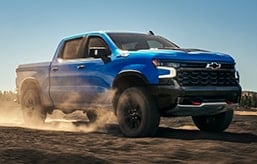
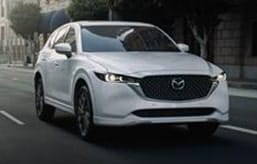
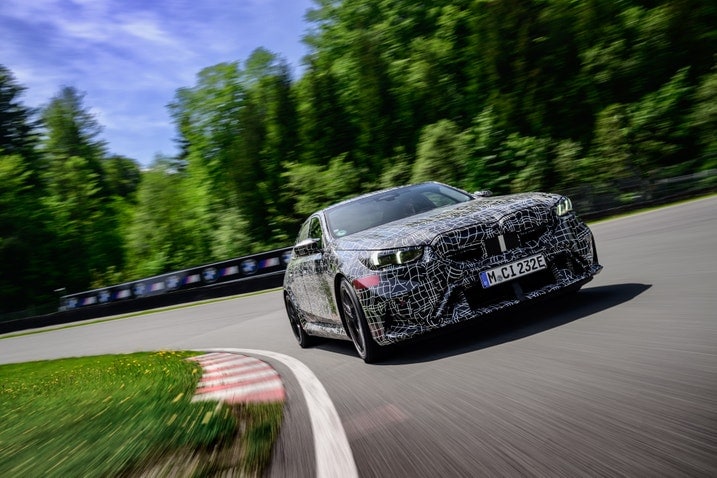
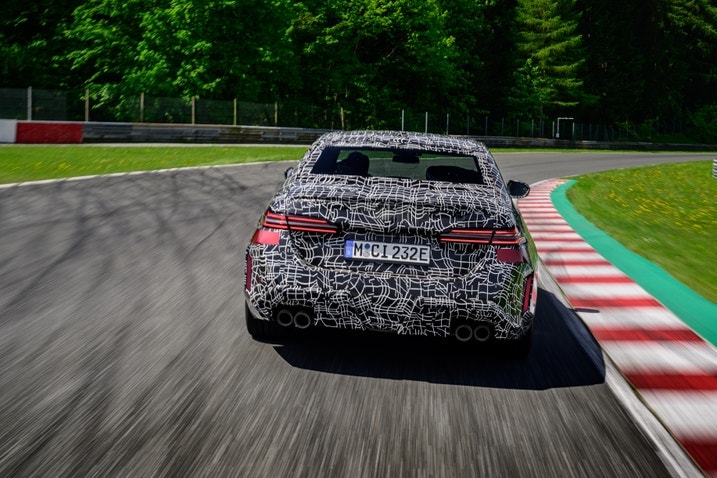
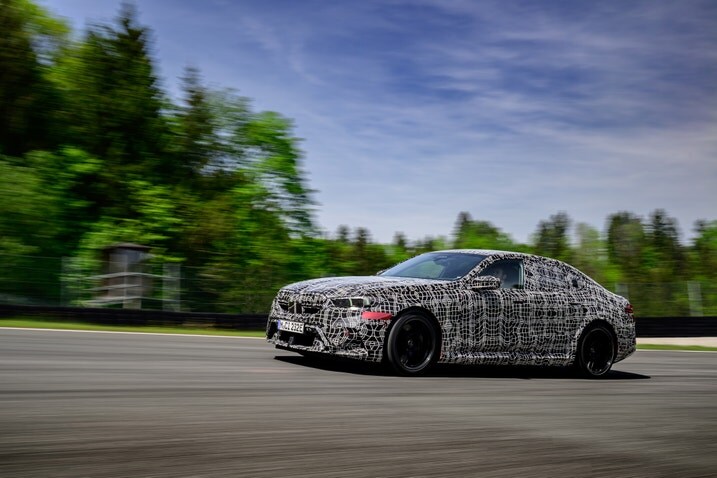


 by
by  edited by
edited by